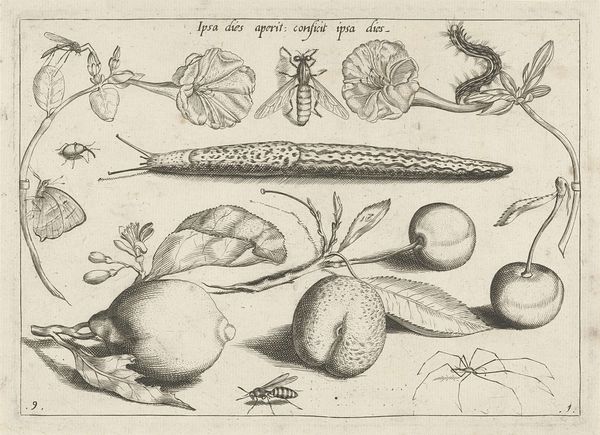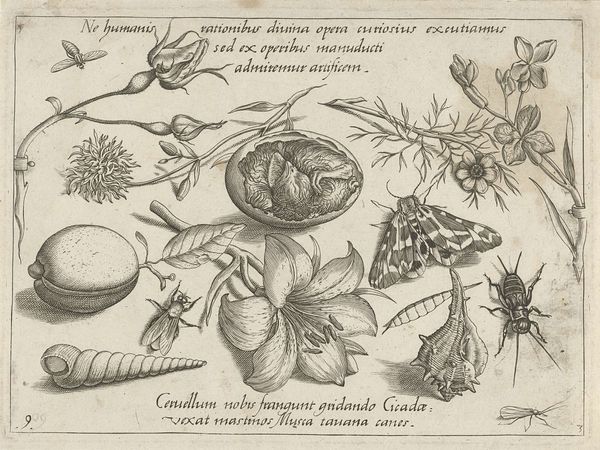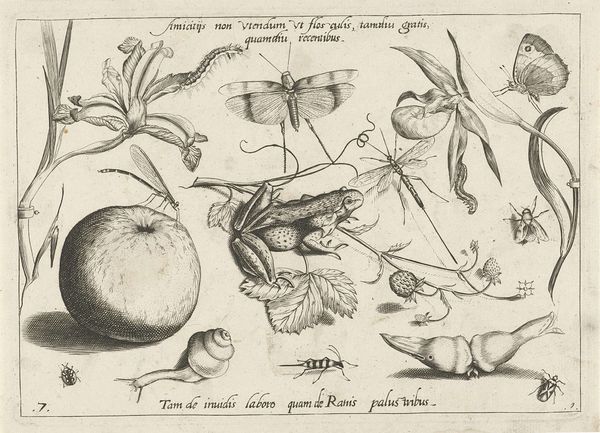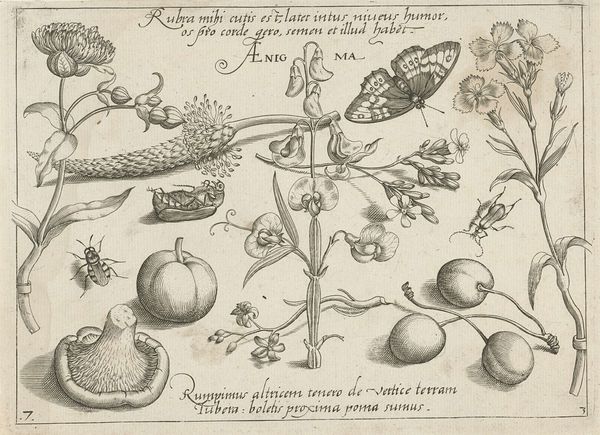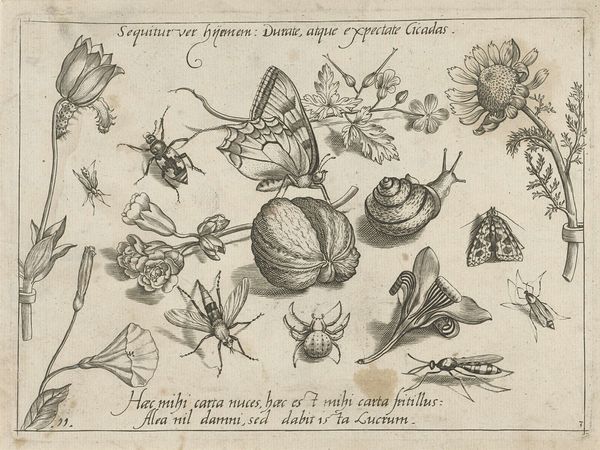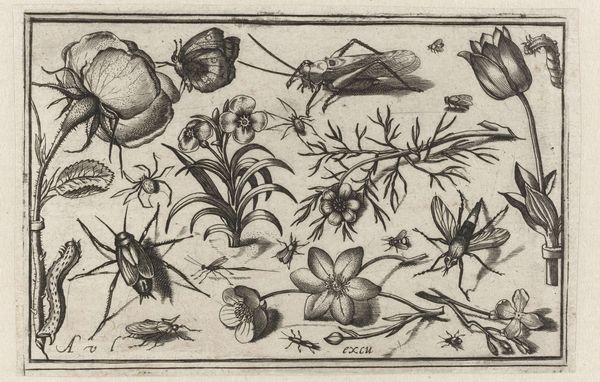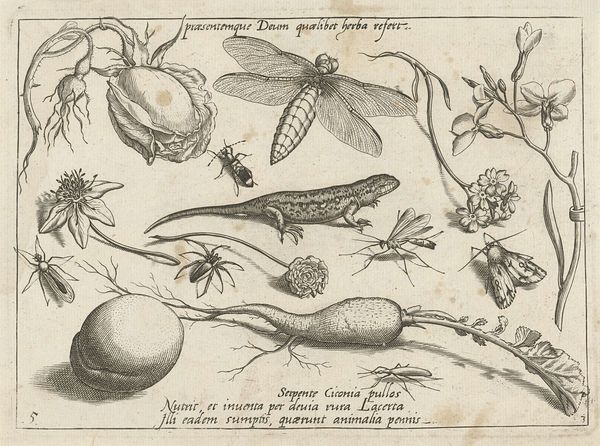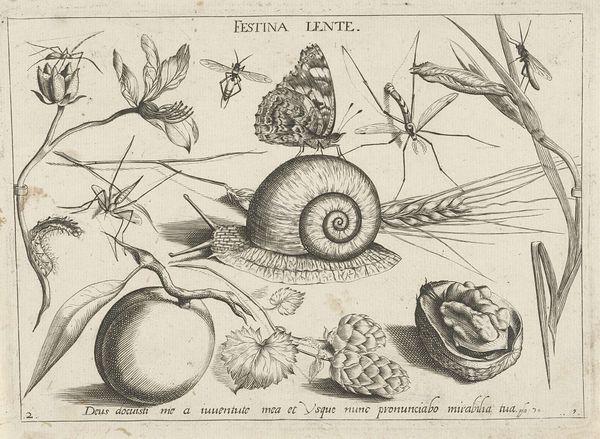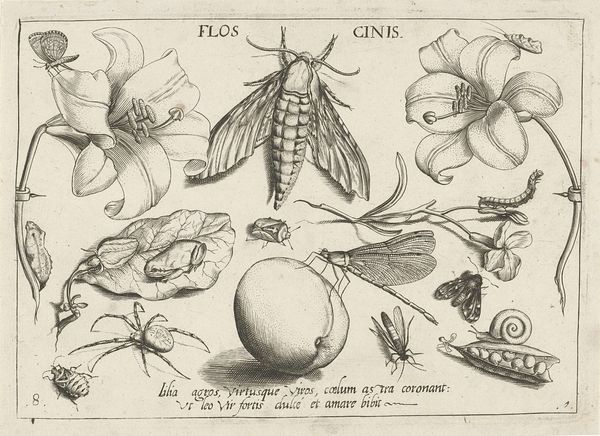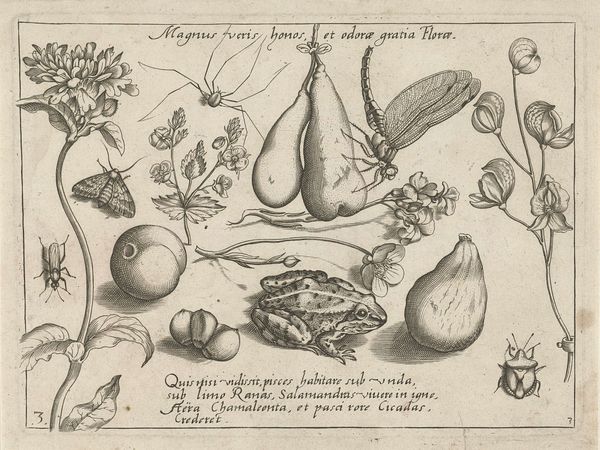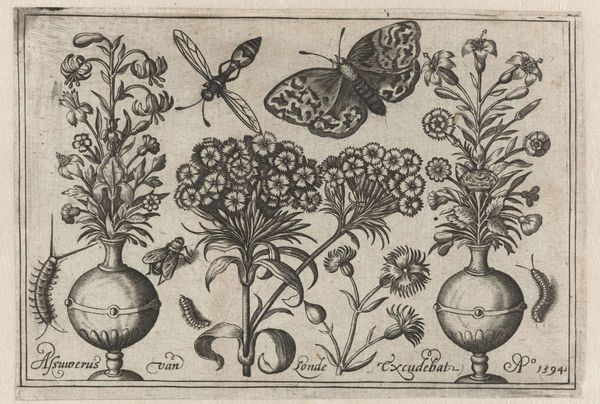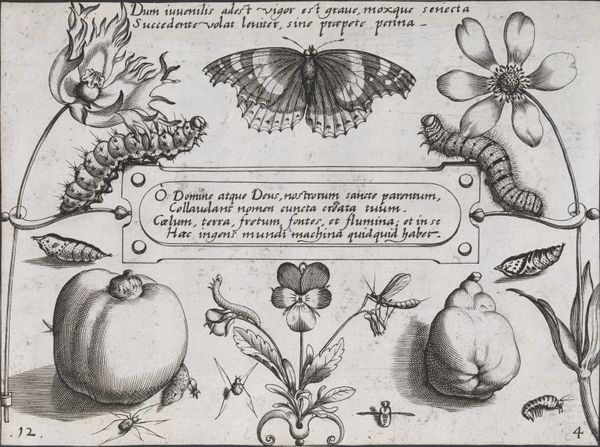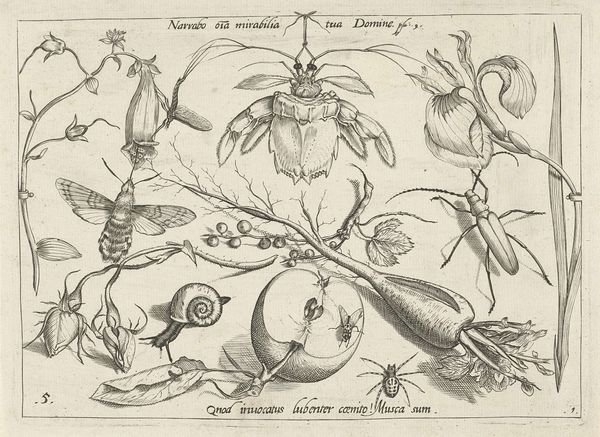
drawing, print, ink, engraving
#
drawing
# print
#
old engraving style
#
flower
#
figuration
#
ink
#
line
#
engraving
#
realism
Dimensions: height 154 mm, width 211 mm
Copyright: Rijks Museum: Open Domain
Curator: Let's explore "Dieren en bloemen rond kastanjes," an engraving with ink on paper, likely from between 1592 and 1726 attributed to Jacob Hoefnagel. Editor: It’s striking how this arrangement presents specimens in such meticulous detail; it almost has a scientific, taxonomic quality. Curator: Precisely, we have to consider the historical context: Early modern science, driven by mercantile expansion and colonization, demanded methods of cataloging the natural world. Representations like this reflect the drive to categorize and exploit natural resources. Editor: You can definitely see that push for precision reflected in the materials, the intricate linework to show texture, the way light falls on each element, and that even the composition lends itself to highlighting these qualities of close observation and reproduction. There is text inscribed, and the word "AEnigma". This seems related to that historical preoccupation you mention. Curator: Absolutely, it is likely part of a series of "emblem books" that combined image and text to convey moral or intellectual lessons, reflecting both a visual culture of knowledge dissemination and the philosophical inquiry that drove scientific exploration at the time. The text refers to the object's dual nature—hard exterior, edible interior, and a source of food but also of riddle, reflecting the ambiguity and interpretive challenges that accompanied new discoveries. Editor: And how these engravings like "Dieren en bloemen rond kastanjes" were essential to spreading this knowledge among different social classes who may not have been literate but could gather useful information from observing the material and form and share that knowledge within the context of practical labor and production. Curator: Yes! Think of how prints moved ideas and fostered discussion across social strata; it allowed new concepts about nature and its use to be visualized and consumed at different levels of literacy. "Dieren en bloemen rond kastanjes," with its hyperrealistic yet clearly mediated depiction of nature, underscores that crucial dynamic. Editor: Examining the craft reveals such historical nuance, seeing how the means of producing and circulating these images were fundamentally interconnected with labor, societal roles, and even the construction of reality. Curator: Absolutely; considering it through a modern theoretical lens enriches our view of the politics involved, helping us appreciate how artworks reflected, and affected, historical change. Editor: Precisely, I believe that delving into this world allows a closer examination of our modern values surrounding consumerism, material culture, and labor.
Comments
No comments
Be the first to comment and join the conversation on the ultimate creative platform.
